In the past, due to less fitting solutions being available, hanging a wall mirror was simply a case of putting a screw or nail into the wall. Then either hooking the mirror directly onto them, or attaching a wire to the rear and using that for hanging.
As technology has evolved more and more options have been developed, which is great for ease, but means that you may not be aware of the latest fixing solutions available. Keep reading to find out more!
Having the right tools, fixtures and fittings for this particular job is essential, and will make hanging your mirror a much simpler and quicker process.
Disclaimer: As an Amazon and Wayfair associate, we do receive a small commission from qualifying purchases made via links within this article.
Tools Needed for Hanging a Wall Mirror
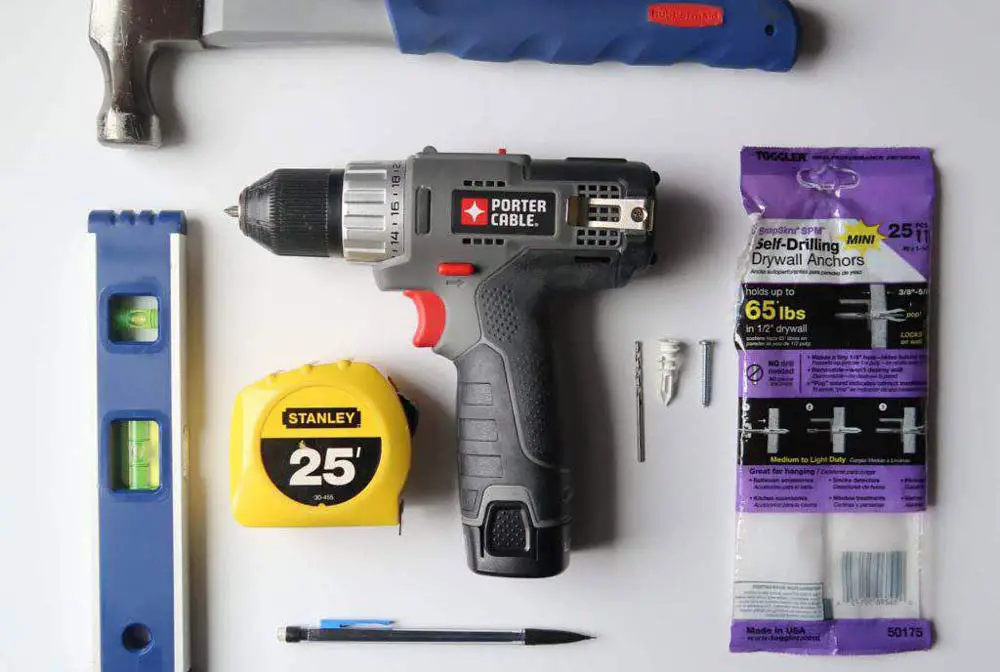
Image credit: porchdaydreamer.com
Here is a list of tools that you may need or will certainly help to hang your mirror, depending on what hanging option you choose:
- Wall fixings (will be dependent on the specific wall type)
- Mirror fittings (may already be attached to the back of the mirror)
- Electronic stud finder (Buy on Amazon)
- Electronic cable detector (Buy on Amazon)
- Pencil
- Tape measure (Buy on Amazon)
- Masking tape (if you don't want to mark your wall)
- Spirit Level (Buy on Amazon)
- Electric drill (Buy on Amazon)
- Hammer (Buy on Amazon)
- Hand screwdriver
- Another pair of hands if it is a heavy mirror
How to Hang a Mirror on a Plasterboard Wall
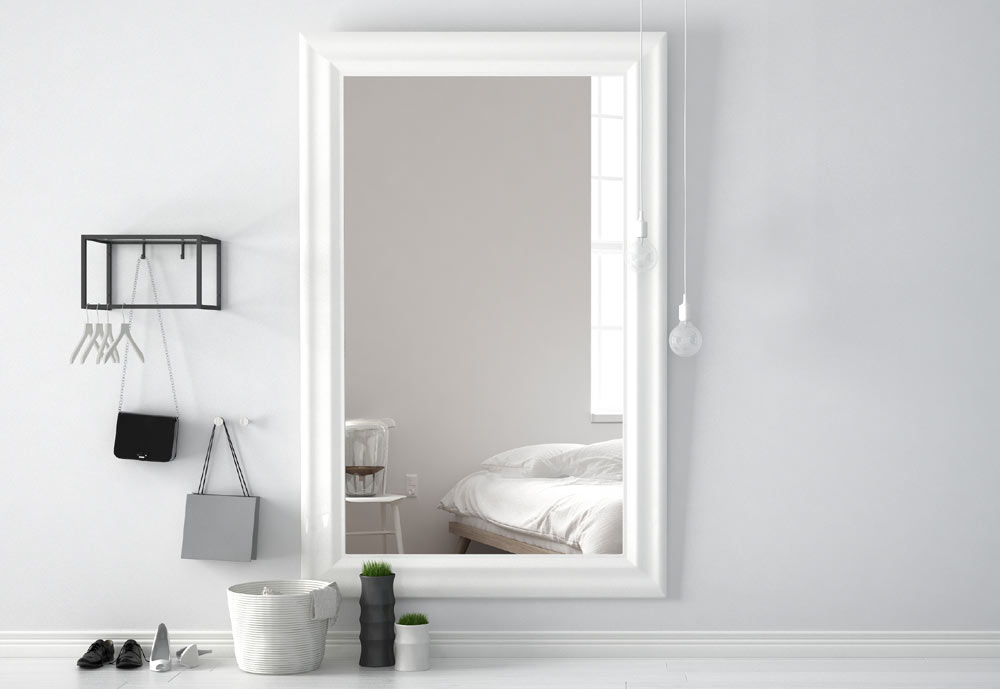
Image credit: homeguides.sfgate.com
When hanging a wall mirror onto plasterboard or drywall, take into consideration where any electrical cables may be located (Never drill in a vertical line above or below any plug sockets or light switches, as that is the direction that hidden wires should travel).
The last thing you want to do is drill or hammer a nail into any electric cables, as this could cause major issues that will not be cheap or easy to correct.
If you have or could borrow one, use an electronic cable detector to check for any electric wires around where you are planning to locate your mirror.
Locate Wall Studs
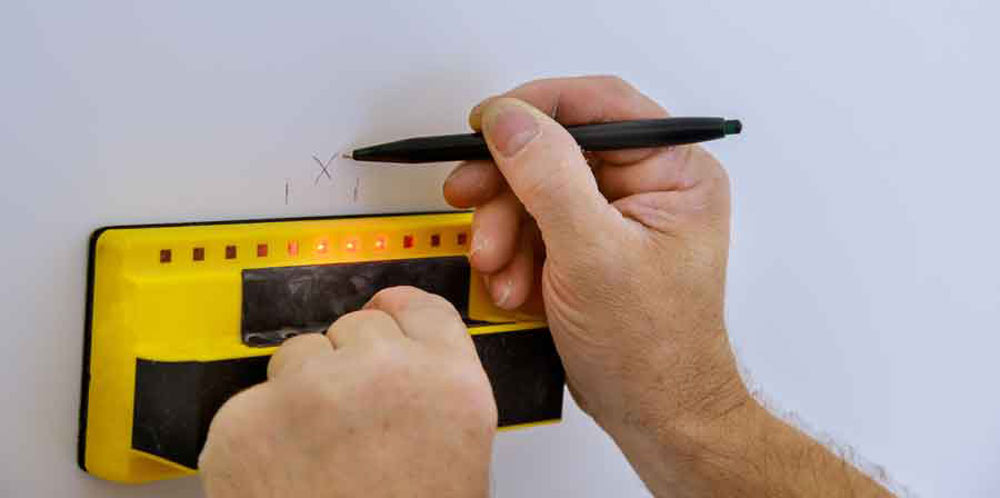
Image credit: garagetransformed.com
Wall studs are the vertical wooden supports that make up the frame of a wall. A stud wall provides stability and strength to the structure and is used to attach other materials like plasterboard and drywall.
When hanging a mirror, it is important to find the studs to get a secure hold to attach your fixings to. You can use a stud finder tool to help locate them, or simply tap on the wall until you hear a solid sound.
Once you have found the studs, mark their location so you know exactly where the most suitable place to drill your holes is. If there is no way to situate your wall mirror where a stud is located, you’ll need to use a more robust fixing method, i.e. plasterboard fixings or adhesive.
Wall Fixings for Plasterboard
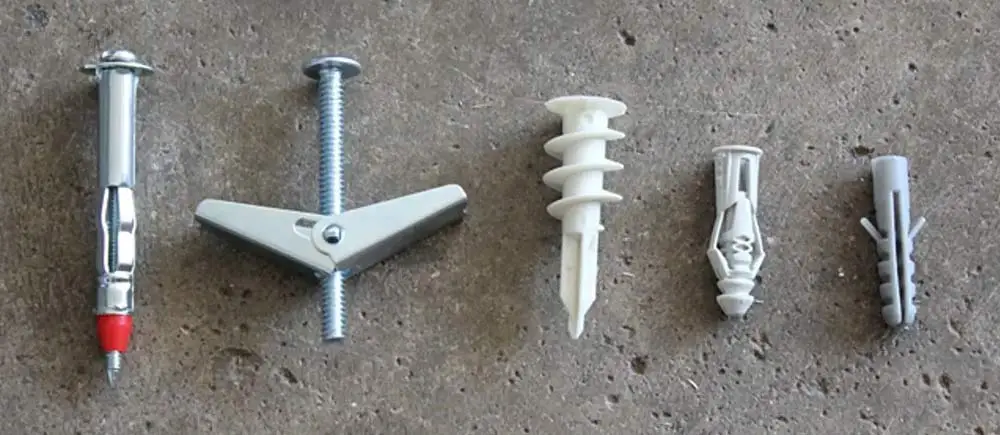
Image credit: howtogeek.com
When choosing wall fixings, make sure that they are appropriate for the type of wall that you have and the mirror weight that you intend to hang on them (the manufacturer or store listing will have the weight). Fixings for plasterboard walls differ from those for brick or concrete walls.
Plasterboard Raw Plugs:

Buy Plasterboard Wall Plugs on Amazon
Plasterboard and drywall raw plugs (also known as wall plugs) have a special design that helps them grip the wall more securely due to the void behind the plasterboard.
The wings on the back of the wall plugs are designed to keep them in place while you're screwing into it them. Make sure to use the right size of raw plug for your chosen screw, and be careful not to over-tighten as this could cause the plasterboard to crack or the raw plug to pull back out.
With the correct ones, these raw plugs can support a maximum of 10kg (22 lbs) in weight (always check the weight limit on the packaging).
Hollow Wall Anchors:
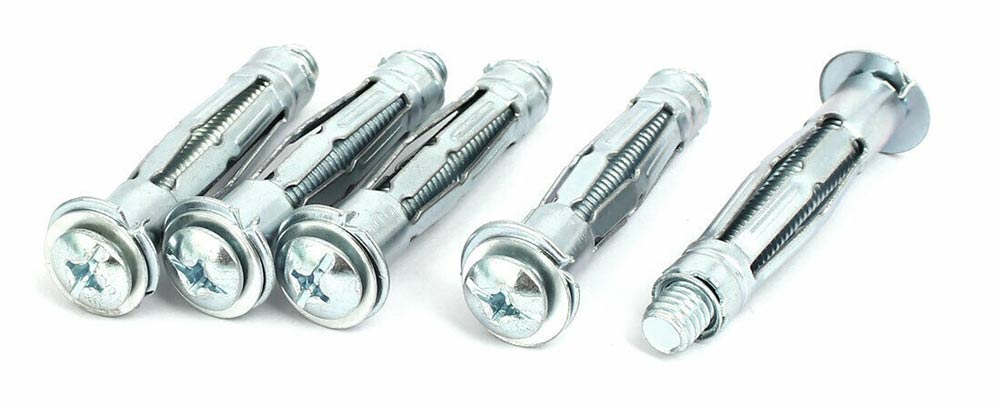
Buy Hollow Wall Anchors on Amazon
These fixings secure a screw into plasterboard or drywall by providing an anchor for any hollow walls. It’s important to use them for additional strength and stability when you’re not drilling into a stud timber, as the plasterboard alone will not take the weight of a heavy object.
The reason that the wall anchor holds securely is down to the anti-rotation lungs and expanding legs that widen when fastened. These types of hollow wall anchors can support up to around 22kg (50 lbs) in weight (be sure to double-check the weight limit on the packaging before purchasing).
Metal Toggle Bolts:
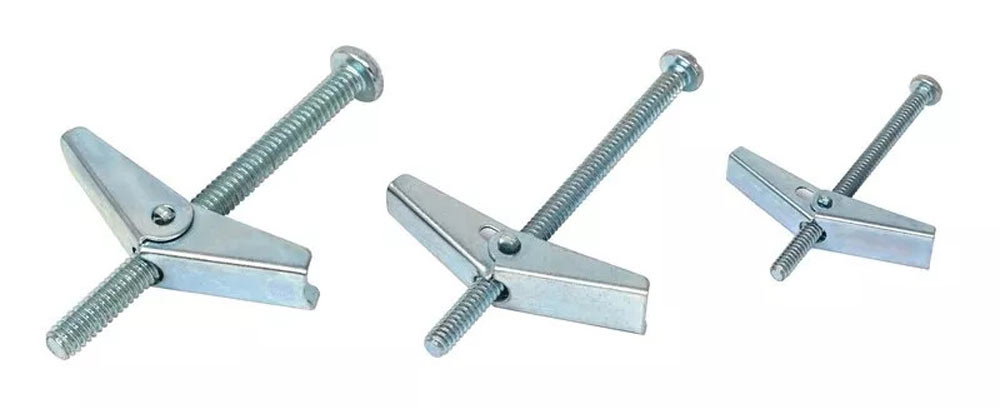
Buy Metal Toggle Bolts on Amazon
Metal Toggle bolts, otherwise known as spring toggles, are made up of a screw and a spring-loaded toggle. These particular types of hollow wall anchors can hold up to around 45kg (100 lbs) in weight. This makes them perfect for extra heavy wall mirrors.
To insert a toggle bolt, you will need to drill a hole big enough to fit the toggle width, and then insert the closed toggle into this gap. As the screw is tightened, the wings will open. This causes the bolt to anchor securely into the drywall.
The larger the area of toggle in contact with the rear of the drywall, the stronger the fixing will be.
How to Hang a Mirror Without Nails
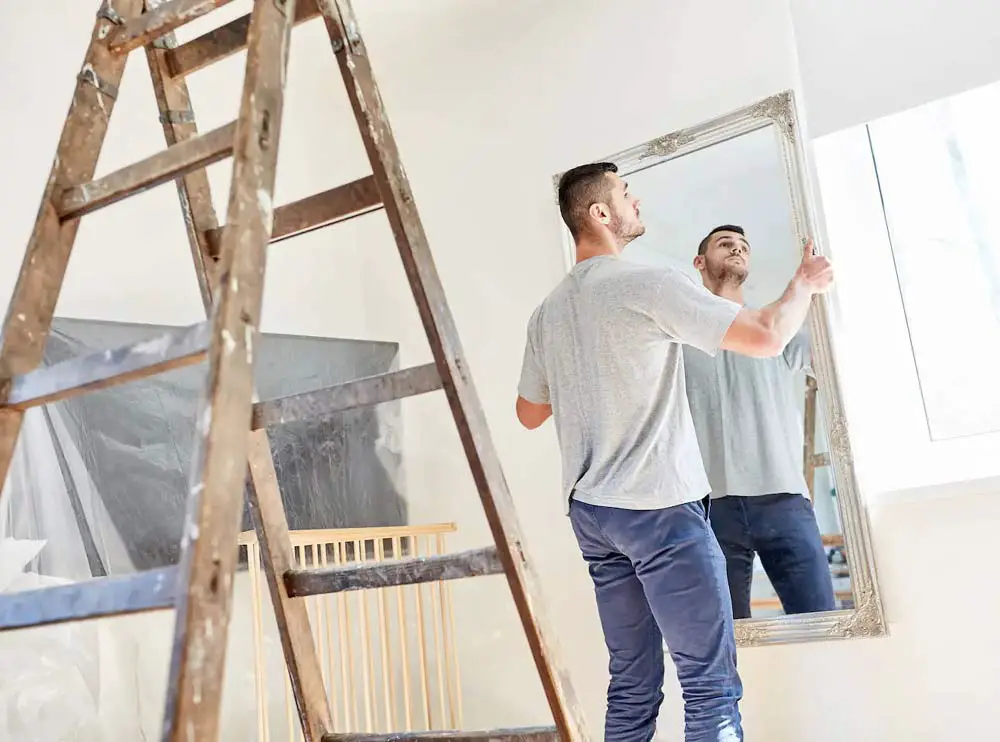
Image credit: angi.com
Check what Fittings are Supplied with the Mirror
The type of fittings supplied with the wall mirror will depend on the mirror's weight and size of the mirror itself.
Small mirrors will likely have either a keyhole slot or D-ring to attach directly onto a nail or screw, whereas a large or heavy mirror will have 2 or 4 D-rings (depending on orientation options) for a wire or screws, or a French cleat (interlocking brackets).
How to Hang a Frameless Mirror with Clips
How To Hang A Mirror With D-Rings
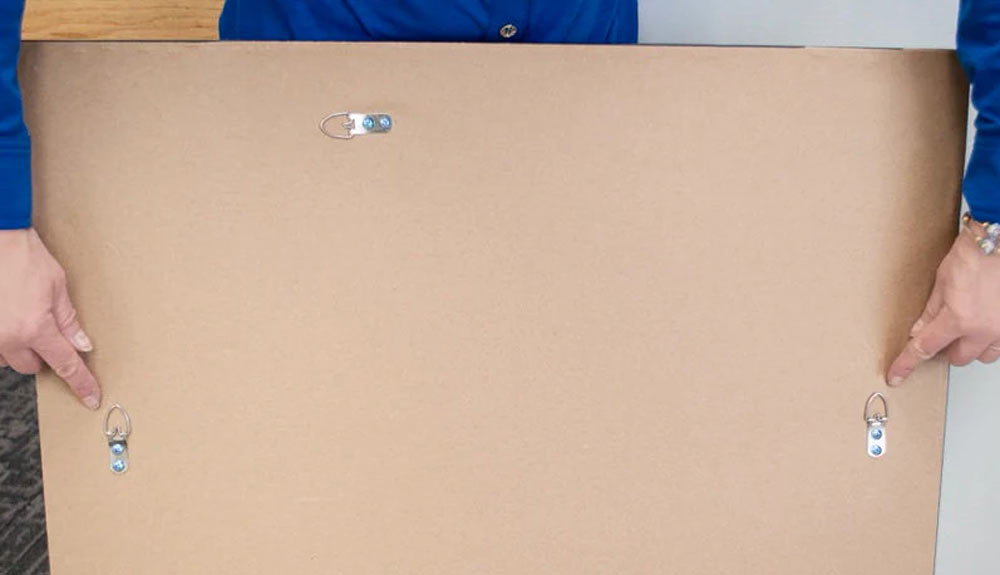
Image credit: utrdecorating.com
- Using a pencil or pen, draw a small line on the wall where you would like the top edge and the horizontal centre line of your mirror to be (for more accuracy, use a tape measure to find the centre of the space you are looking to fill)
- On the rear of your mirror: Find the horizontal centre of your mirror (roughly in line with the D-rings) and mark it with a small pen or pencil line.
- Measure from the centre line you made in step 2, out to the centre of the D-rings on each side and keep a note of the figure. Repeat this process from the top of the mirror, down to the vertical centre of both D-rings, and record again.
- On the wall: Measure down (using the last figure recorded) from the intersection between the top and centre lines made in step 1 and mark the wall level vertically (using a spirit level from the top centre point).
- From the last mark made in step 4, measure out left and then right, using the measurements that were recorded for each D-ring (make any small adjustments for D-ring height discrepancies)
- These are the two marks that will be used for drilling the holes of your chosen wall fixings (follow specific manufacture instructions for the size of the hole and how to fit the fixing itself)
- With your wall fixings in place, hang the mirror by locating the D-rings on the back of the mirror, to the screws on the wall.
How To Hang A Mirror Using Wire
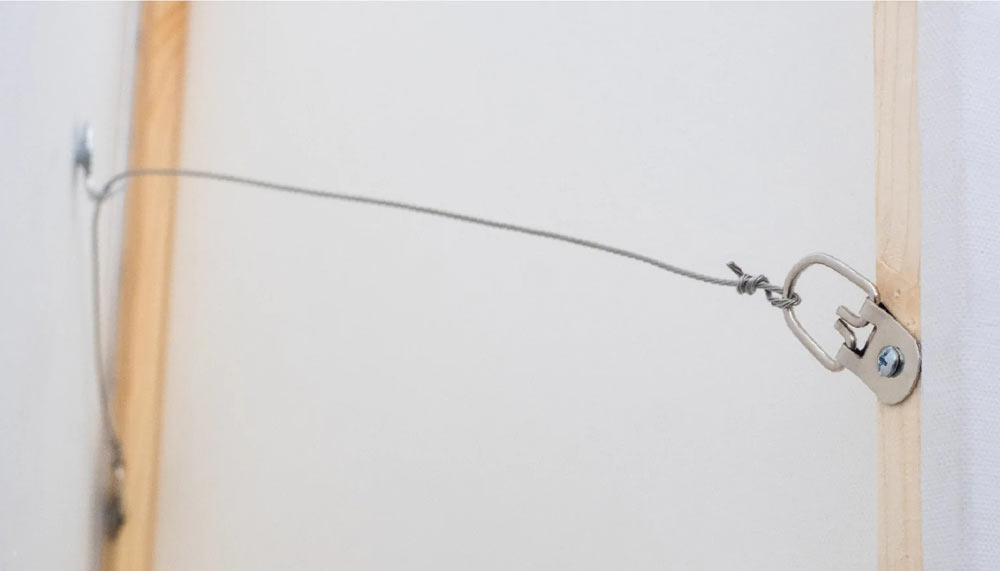
Image credit: picturehangsolutions.com
*Skip steps 1-4 if the wire is already affixed to your mirror.
- On the rear of your mirror: Using a pen or pencil, add a dot about 1/5th of the way down each side of the mirror frame (preferably at the horizontal centre of the frame).
- Drill a small pilot hole (or use a bradawl) on each dot, and screw in the D-rings using the screws provided.
- Thread the mirror wire through the fixed D-rings, leaving enough at each end to twist and knot.
- To secure the hanging wire, knot it around each D-ring. Twist the excess through and around the rings a few times for extra security.
- Looking at the back of your mirror, measure down from the top of the frame down to the centre of the D-rings (record this measurement).
- After locating the perfect position for your mirror, hold it up against the wall. Make a pencil mark on the wall at each side of the mirror, the same distance down as the measurement recorded in step 5.
- Use a spirit level and pencil to join the two marks together. Measure the width of the pencil line and half it, marking this centre point.
- Hold the mirror carefully using the centre point of the hanging wire. If the wire lifts above level more than a few millimetres, add this measurement above the pencil mark made in step 7 and make a final mark on the wall. This is the place to drill and fit the relevant wall fixing for your wall type. Add the screw or hook (depending on what you have chosen).
- Finally, use a spirit level on top of the hung mirror to level it perfectly.
Can a Mirror Be Glued to the Wall?
Yes, it can, but it is dependent on the type of wall finish it is being attached to, the type of wall structure, size of your mirror and whether it is an extra heavy mirror.
For a framed mirror it is important to note whether the frame sits flush with the mirror panel or not (as many don't). If it doesn't, you will only be able to glue the frame surface, which may not be sufficient to safely hold the weight of the whole mirror on your wall.
In the case of an all-glass frameless mirror for the bathroom, you would most likely need to attach it to the wall with adhesive, as many do not have rear fittings (unless French cleats are pre-glued to them)
We suggest getting professional qualified help or advice for your specific wall finish, wall structure, mirror type and size before attempting to do the job yourself.
How To Stick Mirror on Wall With Adhesive
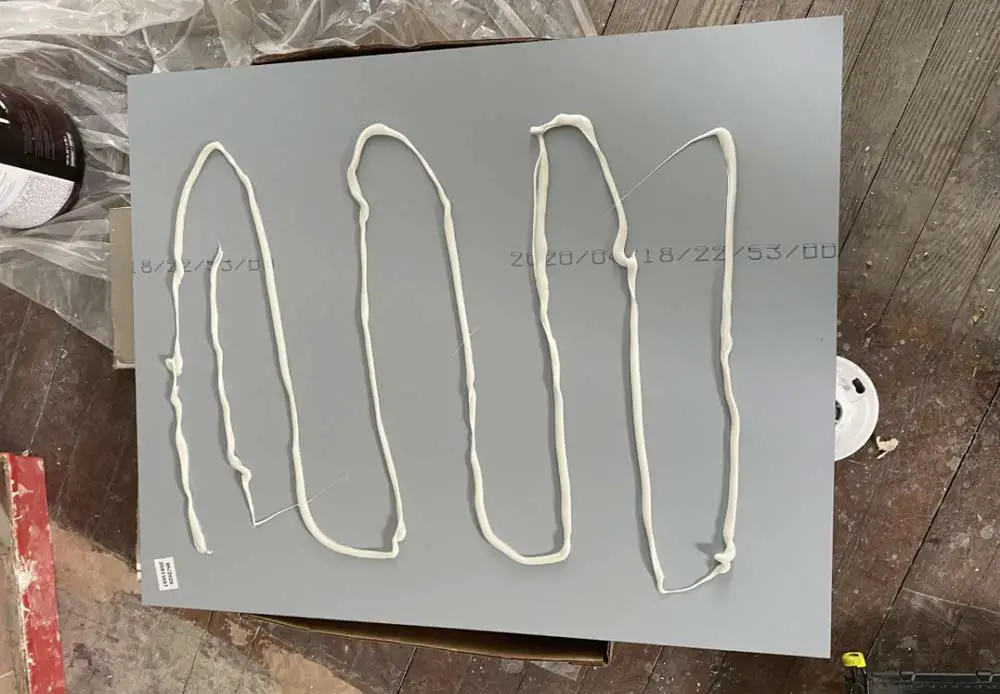
Image credit: dengarden.com
- Be sure to purchase adhesive glue that is specially made for hanging heavy items, including glass mirrors (and make sure that is compatible with what the mirror weighs and the wall structure that you are adhering to).
- Measure the length and width of the mirror and use these measurements to mark (with either a pencil or masking tape, if you don't want to mark your wall) the perfect position on your wall. Double-check your horizontal marks with a spirit level to make sure that they are perfectly straight before you continue.
- Apply the adhesive to either the back of the mirror, wall, or both (following the manufacturer's instructions).
- Push the mirror firmly in place on the wall and hold it in place until the adhesive dries (again following the manufacturer's advice for timings)
- You should then be all set (sorry for the pun!)
How to Hang a Heavy Mirror
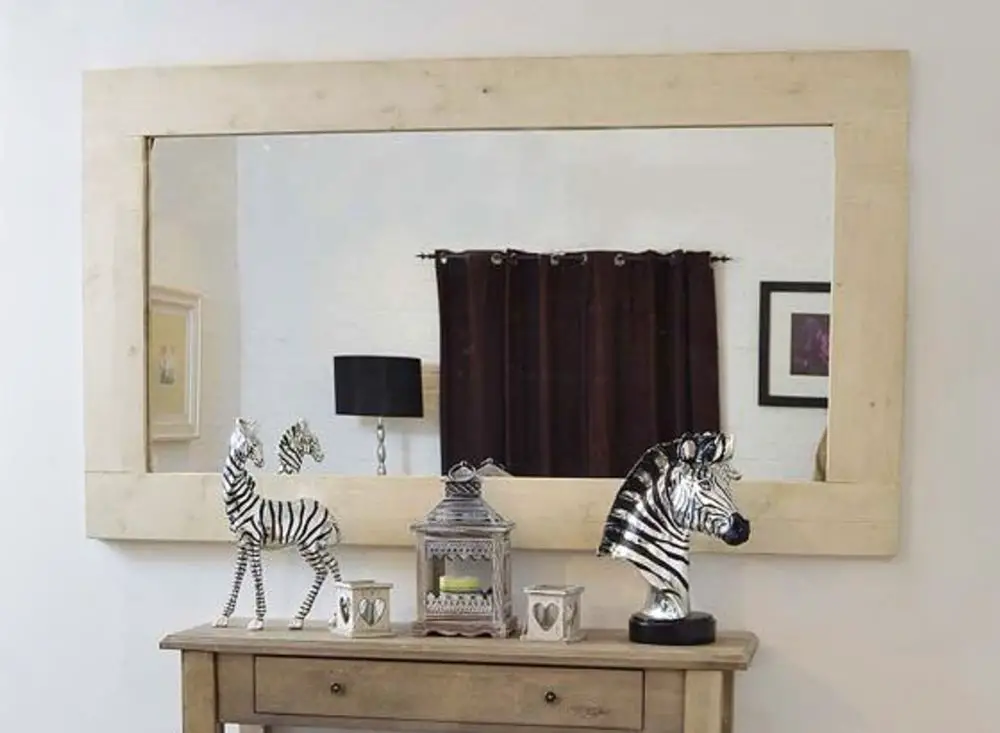
Image credit: mirrorsforyou.com
For heavy mirrors, it is important to take into account the size, weight (obviously!), wall type and fittings for hanging.
It is not advised to use a wire to hang a heavy mirror, as it is not a good weight-bearing option. Therefore we suggest only using D-rings (directly onto screws or bolts), French cleats or Adhesive (for a bathroom)
As explained earlier, it is also important to use the correct wall fixings (with an appropriate weight capacity rating) for your particular wall type. Where possible, in the case of plasterboard walls, attach your hardware directly to timber studs for additional strength and support.
For obvious reasons, these considerations are even more important when hanging a heavy wall mirror.
Can Command Strips Hold Mirrors?

Command strips are strong adhesive tape that is generally used for hanging heavy pictures without the use of nails, screws or any tools, but can also be used for mirrors (as well as large wall art, wall clocks, signs and other wall decor items).
The strongest Command strips can hold up to 9kg (20 lbs) with a maximum frame size of 24 x 36 inches.
They will adhere to several wall surfaces, including painted walls, painted breeze blocks and other concrete surfaces and when you're ready to redecorate your walls, the Command strips remove cleanly and damage-free.
Using Command strips to attach your mirror to the wall is very simple. First, stick one side of the command strip to the rear of the mirror (use 2 or 4 depending on the size and weight of your mirror).
Second, remove the paper strip from the wall facing side of the Command strips, and press the mirror against the wall where you want to install it. Keep firmly pressing for 30-60 seconds to ensure a strong and secure adhesion.
My Final Thoughts
Follow this comprehensive step-by-step 'how to hang a mirror' guide to be sure of using the correct mirror fixtures, fittings and wall fixings for your wall type.
Also, use the advice given to make certain you only use hardware that is suitable to bear the weight of your mirror (especially if it is a particularly heavy or large mirror).
Taking all of this into consideration, you should have no problem hanging a mirror by yourself (or at least with another pair of hands, should that be needed)


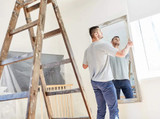
 Author: Matthew Chiappini
Author: Matthew Chiappini